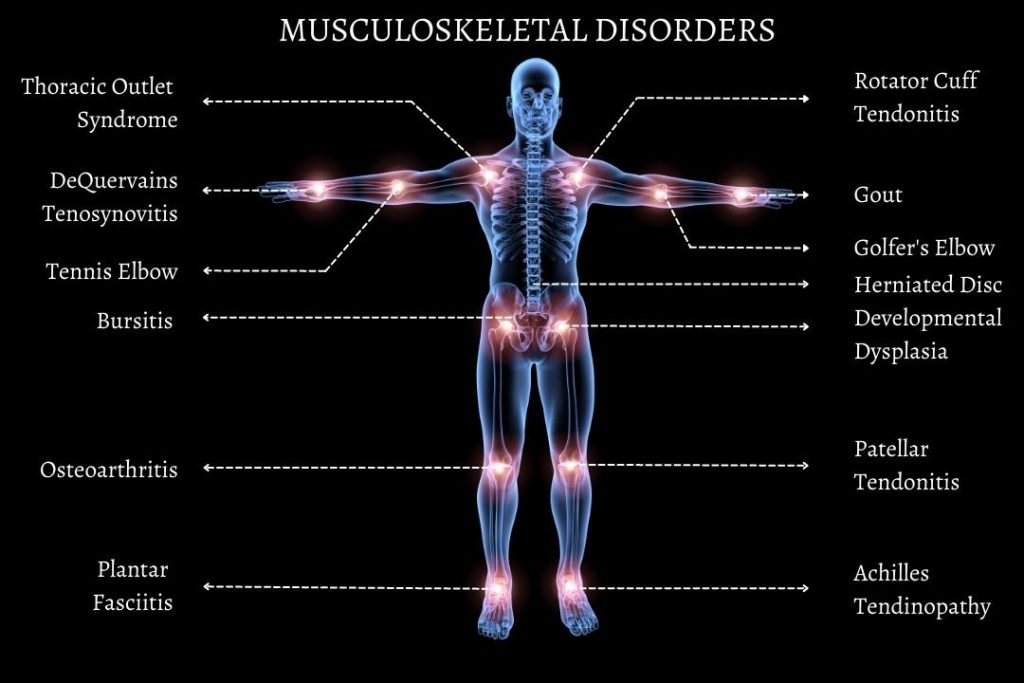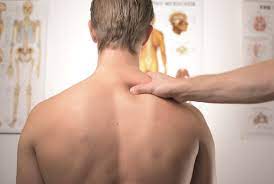Musculoskeletal disorders are conditions that affect the bones, joints, muscles, and connective tissues in the body. These disorders can cause pain, stiffness, and limited mobility, and can affect people of all ages. Some of the most common musculoskeletal disorders include osteoarthritis, rheumatoid arthritis, psoriatic arthritis, gout, spondyloarthritis, osteoporosis, osteopenia, and associated fragility fractures. In this article, we’ll explore these disorders and their effects on the body.
Osteoarthritis is a common form of arthritis that affects millions of people around the world. It occurs when the cartilage that cushions the ends of bones in the joints begins to break down, leading to pain and stiffness. This condition is most commonly seen in the hips, knees, and hands, and can be caused by a variety of factors, including age, obesity, and repetitive use.
Rheumatoid arthritis is an autoimmune disorder in which the body’s immune system attacks the joints, leading to inflammation, pain, and stiffness. This condition can affect people of all ages, and can cause permanent joint damage if left untreated. Psoriatic arthritis is another type of autoimmune arthritis that affects people with psoriasis, a skin condition. This condition can cause joint pain, stiffness, and swelling, as well as skin lesions.
Gout is a form of arthritis that occurs when uric acid crystals build up in the joints, leading to inflammation and pain. This condition is most commonly seen in the big toe, but can also affect other joints in the body. Spondyloarthritis is a group of inflammatory conditions that affect the spine and other joints in the body. This condition can cause back pain, stiffness, and limited mobility, and can be associated with other health issues such as inflammatory bowel disease and psoriasis.

Osteoporosis is a condition in which the bones become brittle and fragile, making them more susceptible to fractures. This condition is most commonly seen in older adults, particularly women, and can be caused by a variety of factors, including age, genetics, and low levels of calcium and vitamin D. Osteopenia is a milder form of bone loss that can progress to osteoporosis if left untreated.
Musculoskeletal disorders can be diagnosed through a variety of tests, including X-rays, MRIs, and blood tests. Treatment options depend on the specific disorder and its severity, but may include medications, physical therapy, and surgery. Lifestyle changes, such as weight loss and regular exercise, can also help manage these conditions and reduce their impact on daily life.
Musculoskeletal disorders can cause significant pain and disability, affecting the quality of life for those who suffer from them. It’s important to seek medical attention if you’re experiencing symptoms of any of these disorders, as early diagnosis and treatment can help manage symptoms and prevent further damage. With proper care and management, people with musculoskeletal disorders can lead fulfilling and active lives.
Musculoskeletal disorders (MSDs) are a common type of health problem that affect the bones, muscles, tendons, ligaments, and other soft tissues in the body. These disorders can be caused by a variety of factors, including age, injury, and disease. Car accidents are a common cause of MSDs, as the impact of a crash can cause significant trauma to the body.
Some of the most common musculoskeletal injuries resulting from car accidents include carpal tunnel syndrome, tendinitis, rotator cuff injuries (which affect the shoulder), epicondylitis (which affects the elbow), trigger finger, muscle strains, and low back injuries. Here’s a closer look at these conditions and how they can be treated:
Carpal tunnel syndrome: Carpal tunnel syndrome occurs when the median nerve in the wrist becomes compressed or damaged. This can cause symptoms such as numbness, tingling, and pain in the hands and fingers. Carpal tunnel syndrome can be caused by repetitive motions or trauma, such as from a car accident. Treatment options may include wrist splints, physical therapy, or surgery.
Tendinitis: Tendinitis is an inflammation or irritation of a tendon, which is a thick cord that attaches muscle to bone. Tendinitis can cause pain and tenderness in the affected area, as well as difficulty moving the joint. Treatment may include rest, ice, physical therapy, or medication.
Rotator cuff injuries: The rotator cuff is a group of muscles and tendons that surround the shoulder joint. Rotator cuff injuries can cause pain, weakness, and limited mobility in the shoulder. Treatment may include rest, ice, physical therapy, or surgery.
Epicondylitis: Epicondylitis is an inflammation of the tendons that attach to the elbow. It can cause pain and tenderness in the elbow, as well as difficulty moving the joint. Treatment may include rest, ice, physical therapy, or medication.
Trigger finger: Trigger finger is a condition in which one of the fingers gets stuck in a bent position. It can cause pain and stiffness in the affected finger. Treatment may include rest, physical therapy, or surgery.
Muscle strains: Muscle strains are common injuries that can occur when muscles are stretched or torn. They can cause pain, swelling, and limited mobility in the affected area. Treatment may include rest, ice, physical therapy, or medication.
Low back injuries: Low back injuries can occur when the muscles, ligaments, or discs in the lower back are damaged. They can cause pain, stiffness, and limited mobility in the lower back. Treatment may include rest, physical therapy, or medication.
If you have been involved in a car accident and are experiencing any of these musculoskeletal symptoms, it is important to seek medical attention right away. A doctor or physical therapist can help diagnose your condition and develop a treatment plan to help you recover. By taking the necessary steps to address your musculoskeletal injuries, you can get back to feeling like yourself again.
